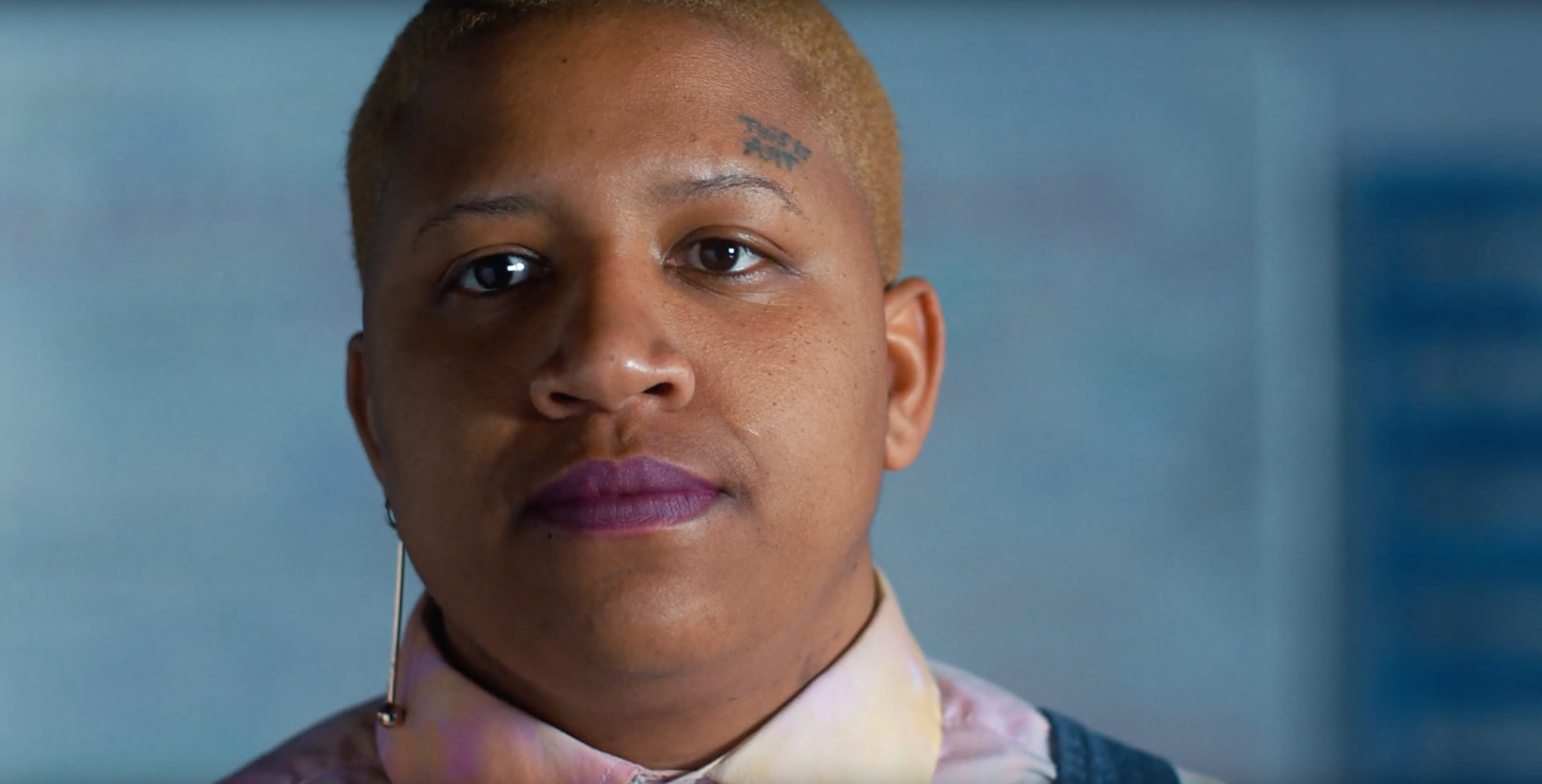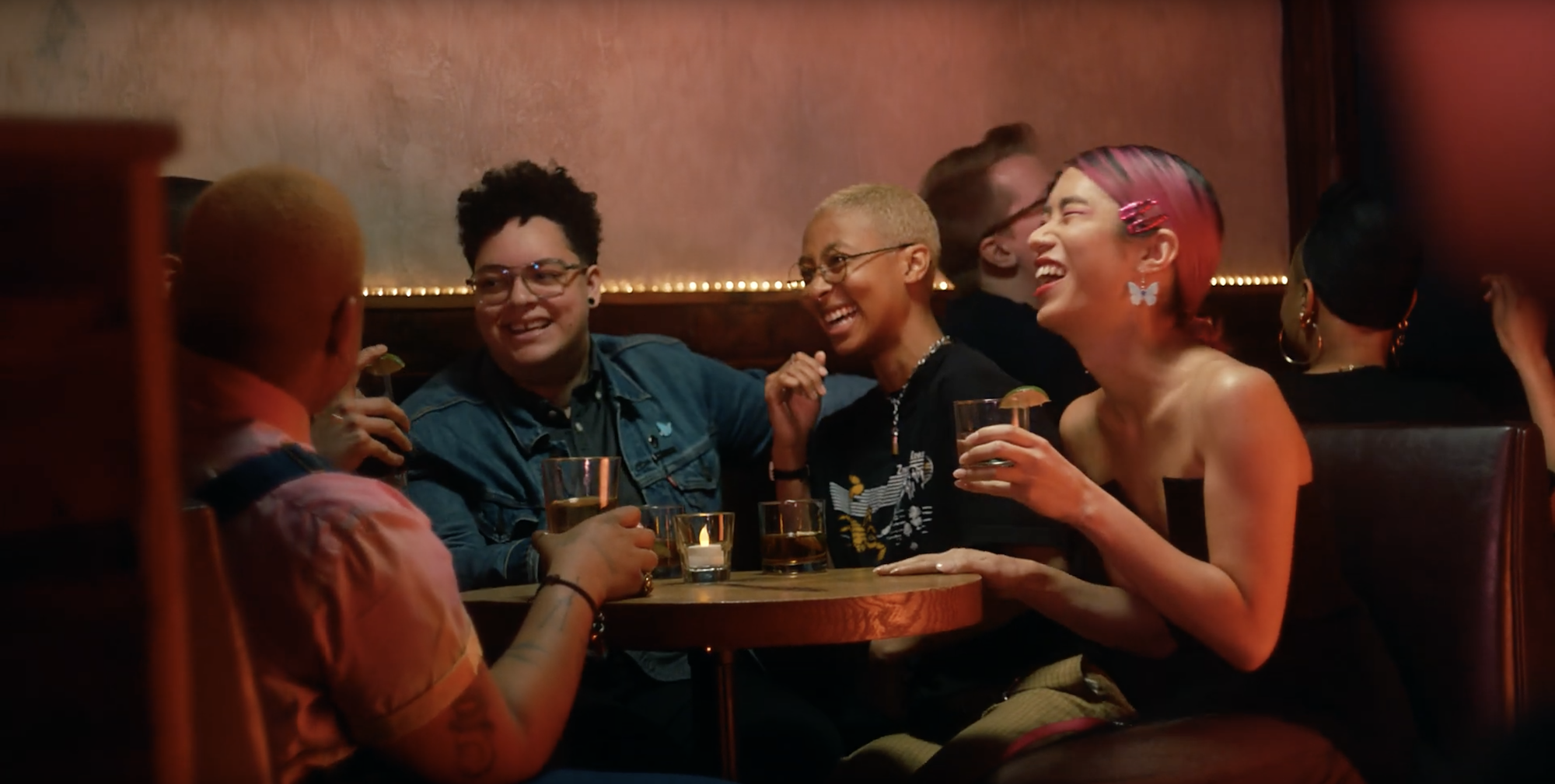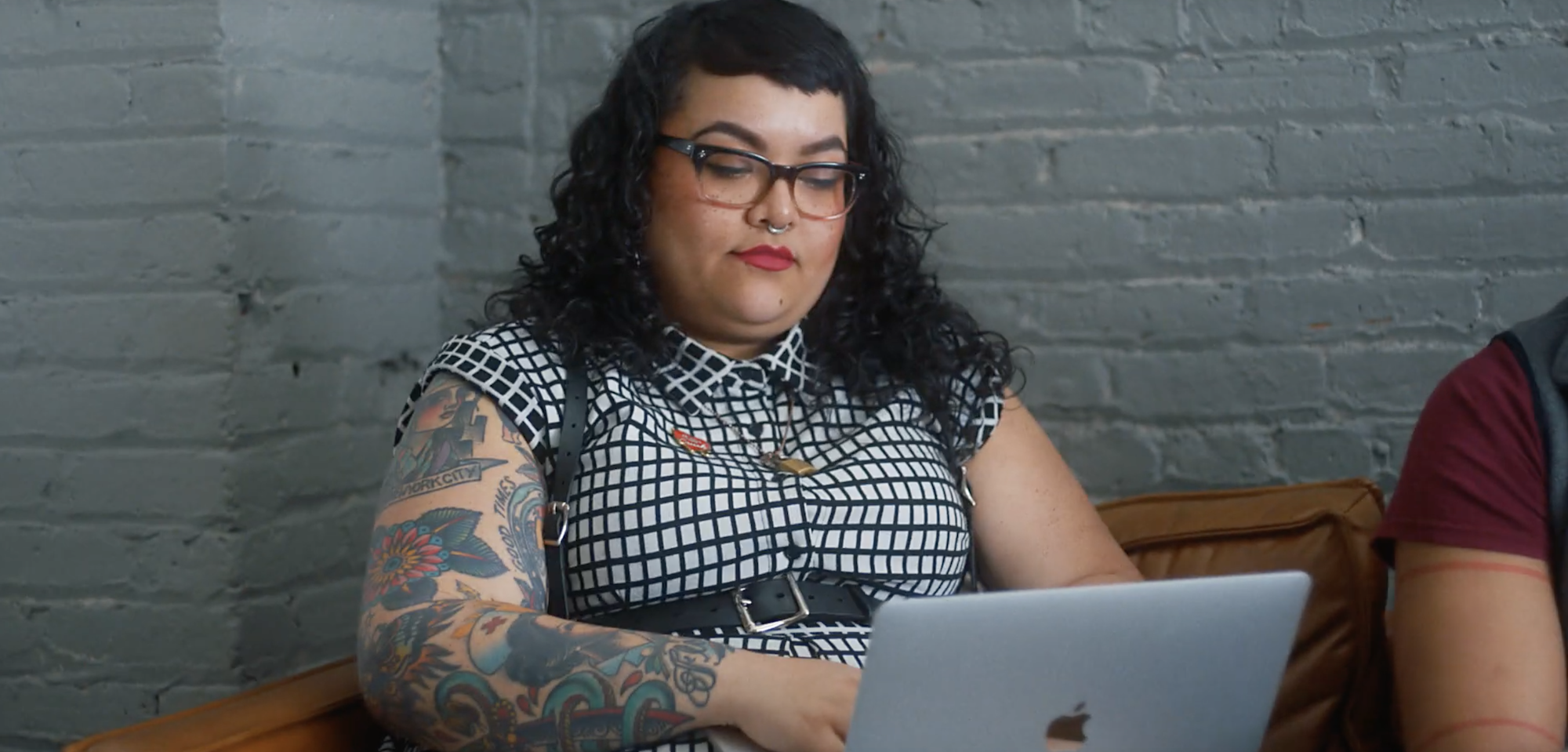When I graduated from art school in 2016, I was desperate to find work that straddled the “professional” world and my queer identity. I would scour Instagram for hours, looking for elusive opportunities. That’s how I first encountered Posture Media, an online magazine featuring interviews, essays, and photography by and about women, people of color, and LGBTQ creatives.
At that time, the concept of being out at work felt unfathomable, so when I stumbled upon Posture’s Instagram, I immediately emailed the founder, Winter Mendelson. To my surprise, they got back to me right away, and we set up a time to meet at the Bushwick co-working space that Posture was operating out of at the time. I remember being shocked, but not surprised, by the microscopic size of the operation—only Winter at the time—despite the scale at which Posture was producing content and printed materials. That summer, I began assisting with video and photoshoots for Posture as a volunteer—with almost no existing infrastructure for queer media, budgets were small in the beginning. But Posture was starting to create that infrastructure, for themselves and others.
Six years later, Posture has become an international print magazine and creative studio with a dedicated community-first ethos, meaning they make a point to always employ and amplify queer and trans people and people of color. You can find people like Rashaad Newsome, Mykki Blanco, Amanda Lepore, and Susanne Bartsch on their covers.
Posture is now made up of a core creative team: Winter Mendelson, Asher Torres, and Jesse Lackowitz Crozier. Winter is the original founder and oversees nearly everything, including partnerships, production, consulting, and events. Asher, the co-founder and senior production director, builds and manages project teams and scouts talent for behind-the-scenes. And Jesse, who just recently joined the Posture team, is the creative producer tasked with collaborating with artists, brands, and designers.
In January, Posture presented arguably its most high-profile project to date: What’s in a Pronoun, a film about the non-binary experience specifically commissioned for Cannes Film Festival. The film and accompanying custom zine are learning tools for explaining the non-binary pronoun they/them and increasing queer storytelling in media. The topic was something the team could personally relate to as Winter is non-binary and uses they/them pronouns, Jesse is non-binary and uses they/them pronouns, and Asher is trans and uses he/they pronouns. (Full disclosure: I also worked as a digitech on the crew.) I spoke to the team about why we need these tools and what they mean for queer representation in media, as a whole.
What is Posture Media and how does it factor into the media landscape?
Winter: Posture Media is a full service integrated studio comprised of women, people of color, and LGBTQ+ creatives and experts. Our mission is to expand diversity in advertising, media, and communications. We work with companies who desire to invest in diversity across their creative departments and take an intersectional approach, rather than simply produce a one-off campaign or check off a box for the year. What sets us apart is our dedication to understanding people and ways of being in dynamic ways.
Asher: Authenticity is such an overused buzzword and we often see companies claiming that position without putting in the proper effort. Posture achieves authenticity by pairing brands and companies with diverse creatives to tell the right story from the right lens with the right people. It takes a lot of work and awareness to build genuine cultural literacy.
Can you explain What’s in a Pronoun and tell me a little bit about why you decided to make it?
Winter: We were invited to host a content session at Cannes Lions during LGBTQ programming day on the Terrace Stage, and we wanted to use our time to make an impact and share something original. Since the theme was LGBTQ, we went with something close to our hearts and chose to shed light on non-binary and trans people, part of the umbrella that is the least visible, understood, and accepted in my opinion.
Jesse: Cannes Lions was the impetus that allowed us to create a project about our own identities as non-binary trans folks. It was an opportunity to showcase the stories of our own community on a huge international stage, which is something that is rarely done and had never been done at Cannes Lions. While Cannes was the jumping off point we really made this film as a way to show a piece of the lives of non-binary folks in an authentic way. To show our existence to the world and to ourselves—being invisible is so much of our daily experience but that’s changing and I hope we can be a part of that change. One ethos I always try to follow is to be and make work that my younger self needed, seeing this film would have been huge for me.

As a learning tool, how do you think this film factors into the overall cultural understanding of non-binary identity?
Winter: My hope is that in showing what others go through, it might inspire more people to feel more affirmed in their own gender fluidity and know they are not alone. I also hope it reaches allies (current or potential) and sparks thoughts and/or conversations about expanding human understanding of gender and identity.
Asher: As a learning tool, I hope it teaches people not to make assumptions, especially about someone’s gender. What this film invites people to do is open their eyes and ears. I think it is important to give the quality and storytelling opportunity to the subjects because non-binary identity, and the exploration of gender in general, has been overlooked for too long.
Jesse: As a learning tool it’s my hope that people will watch this film and understand that non-binary folks exist in all kinds of presentations and bodies, and that we face many kinds of struggles day-to-day. I want people to know that making space for us in your language and understanding can make our lives much easier. I want viewers to feel a connection even if it’s not their story we’re telling.
So there is obviously a lot of nuance around non-binary identity and with that in mind, can you tell me a little bit about hiring a crew and casting for something like this? It’s pretty obvious that this project is intimate and I’m wondering what that means in terms of who you have on set as it relates to identity.
Winter: Production is notoriously a boys club, and we’re here to change that. Honestly all of our sets are magical experiences because of our commitment to diversity, and how often we work with women and non-binary talent. This was an extension of that in the sense that we really dedicated ourselves to finding non-binary crew and cast—and I have never ever been on a production where the majority of people working were non-binary, trans, and/or queer. It was absolutely amazing.
Asher: It was really important to me to have queer, non-binary, trans, and select allies on set. I feel that it made it made for a better product because everyone was really engaged and in love with the story as if it were their own. Also, it’s about giving jobs and opportunities to the people that deserve it. I feel that in this industry this is not something that is thought about enough due to privilege. People don’t have to think about it on their day-to-day. We often have the wrong people telling the wrong stories.
Jesse: It was paramount that we had as many people who identified as queer and non-binary and trans on this set as possible—and we managed to do that about 98 percent—with the other 2 percent being heavily vetted and approved allies. It was essential for the set to be a safe space, for all crew to be representing those practices—this is not my experience on most sets so we learned a lot and accomplished a lot—having a mostly queer/trans crew definitely made it easier to implement but I’d like to see this everywhere. Telling non-binary stories [or any stories] where the crew behind the camera reflects the experiences and identities of who’s in front of it is extremely important.

Why is collaboration important, specifically as it relates to this project or anything queer for that matter?
Winter: I think collaboration is crucial, especially when you’re representing an identity or lived experience, because there is no way to ever really able to represent a large community in a short amount of time. You need to make sure you have people in the room to exchange experiences, so you can come together and figure out how to sensitively portray subtle yet important complexities. Non-binary, as small of a subset of the LGBTQ community it may be, is actually incredibly varied and diverse.
Jesse: Collaboration is so important—especially with a project with so many moving parts/ people, you have to make space and have a lot of trust in each other. For me personally I feel that the best work comes from collaborating, feeding off each other’s creative ideas and energy and viewpoints is crucial. Without it you’re just in an echo chamber.
How was it working with an all non-binary cast?
Jesse: The cast was incredible, Río, Richard, Dexx, Dylan and Yên are all so brilliant and beautiful and talented—truly a joy to work with. They’re all people I was close with [or have become close with] in real life and I feel so lucky they wanted to be part of this project. I’ve never seen this many non-binary folks on a project together in my life—it is the future I want!
I noticed that the film utilizes voice over instead of diegetic sound which in my mind, makes it much more powerful. Why did you make that choice?
Winter: As a creative studio, we advocate to always let people tell their own stories. As this film was a personal project for us, it was a seamless decision to include the actual voices and thoughts of the non-binary cast as the VO.
Jesse: I wanted each person in the film to represent not just non-binary folks but to represent themselves individually and authentically—they’re not actors. We had each person answer questions in their own words and we recorded their voices for the VO. It’s powerful because it adds dimension to each person and gives them agency—they’re narrating their own story.
So let’s pivot and talk a little bit about where this film lives and where it premiered. Cannes is a big deal. What was that like for you all?
Winter: Presenting at Cannes Lions was a prestigious opportunity that opened a lot of doors for us. It was pretty incredible to have the opportunity to learn from some of the world’s best minds, and to learn a lot about the advertising industry in a beautiful environment. The one thing I would change is accessibility. As a boutique independent studio, the cost was nearly prohibitive for us. And there were a lot of discussions about diversity, but the festival as a whole still remains very white and cisgender. I’d love to partner with some select companies next year and develop a scholarship fund to bring more diversity to Cannes Lions—and ultimately more creativity—which is what it’s all about.
Asher: It was amazing to have this opportunity. It was an honor. But it also opened up a lot of things for me about how important it is what we do at Posture everyday. There are a lot of conversations about women and diversity and everybody had a lot of great thoughts, but I felt it wasn’t radical enough or impactful long-term. I feel like there is room for growth at Cannes and people need to stop being afraid to have these conversations. And stop sugar coating everything because people are suffering, and the work is suffering.

So what’s the future for queer storytelling and pieces like this?
Jesse: The future of queer storytelling [and all storytelling, I hope] is all queer folks [not just white cis queers] telling their own stories, getting HIRED to make their own stories, to be behind the camera, in the writers room, producing, consulting, etc and not just as subjects. I want to see queer folks being themselves, living, writing, and making art and thriving while doing so.
